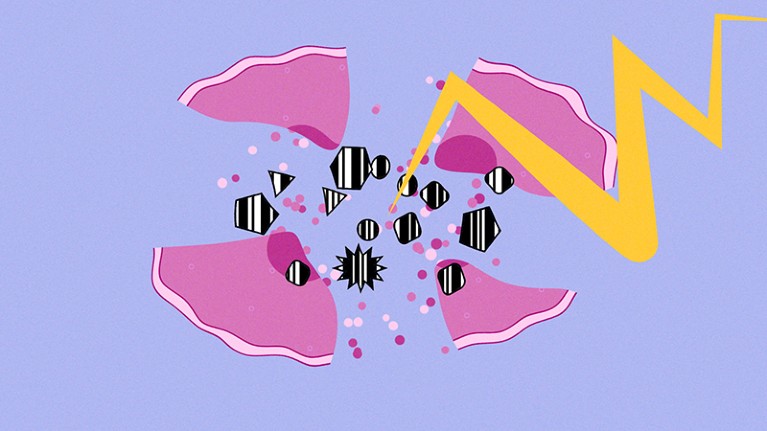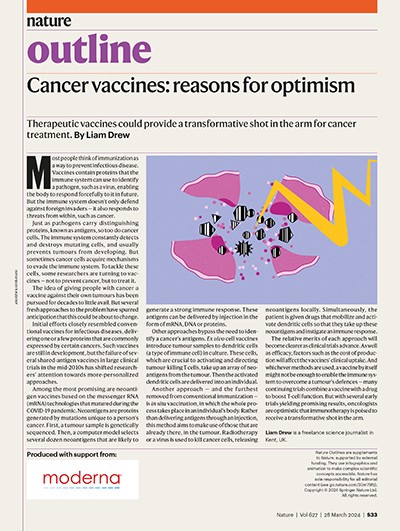[ad_1]

Illustration: Andrew Khosravani
Most people think of immunization as a way to prevent infectious disease. Vaccines contain proteins that the immune system can use to identify a pathogen, such as a virus, enabling the body to respond forcefully to it in future. But the immune system doesn’t only defend against foreign invaders — it also responds to threats from within, such as cancer.
Just as pathogens carry distinguishing proteins, known as antigens, so too do cancer cells. The immune system constantly detects and destroys mutating cells, and usually prevents tumours from developing. But sometimes cancer cells acquire mechanisms to evade the immune system. To tackle these cells, some researchers are turning to vaccines — not to prevent cancer, but to treat it.
Nature Outline: Cancer vaccines
The idea of giving people with cancer a vaccine against their own tumours has been pursued for decades to little avail. But several fresh approaches to the problem have spurred anticipation that this could be about to change.
Initial efforts closely resembled conventional vaccines for infectious diseases, delivering one or a few proteins that are commonly expressed by certain cancers. Such vaccines are still in development, but the failure of several shared-antigen vaccines in large clinical trials in the mid-2010s has shifted researchers’ attention towards more-personalized approaches.
Among the most promising are neoantigen vaccines based on the messenger RNA (mRNA) technologies that matured during the COVID-19 pandemic. Neoantigens are proteins generated by mutations unique to a person’s cancer. First, a tumour sample is genetically sequenced. Then, a computer model selects several dozen neoantigens that are likely to generate a strong immune response. These antigens can be delivered by injection in the form of mRNA, DNA or proteins.
Other approaches bypass the need to identify a cancer’s antigens. Ex vivo cell vaccines introduce tumour samples to dendritic cells (a type of immune cell) in culture. These cells, which are crucial to activating and directing tumour-killing T cells, take up an array of neoantigens from the tumour. Then the activated dendritic cells are delivered into an individual.
Another approach — and the furthest removed from conventional immunization — is in situ vaccination, in which the whole process takes place in an individual’s body. Rather than delivering antigens through an injection, this method aims to make use of those that are already there, in the tumour. Radiotherapy or a virus is used to kill cancer cells, releasing neoantigens locally. Simultaneously, the patient is given drugs that mobilize and activate dendritic cells so that they take up these neoantigens and instigate an immune response.
The relative merits of each approach will become clearer as clinical trials advance. As well as efficacy, factors such as the cost of production will affect the vaccines’ clinical uptake. And whichever methods are used, a vaccine by itself might not be enough to enable the immune system to overcome a tumour’s defences — many continuing trials combine a vaccine with a drug to boost T-cell function. But with several early trials yielding promising results, oncologists are optimistic that immunotherapy is poised to receive a transformative shot in the arm.
[ad_2]
Source Article Link


